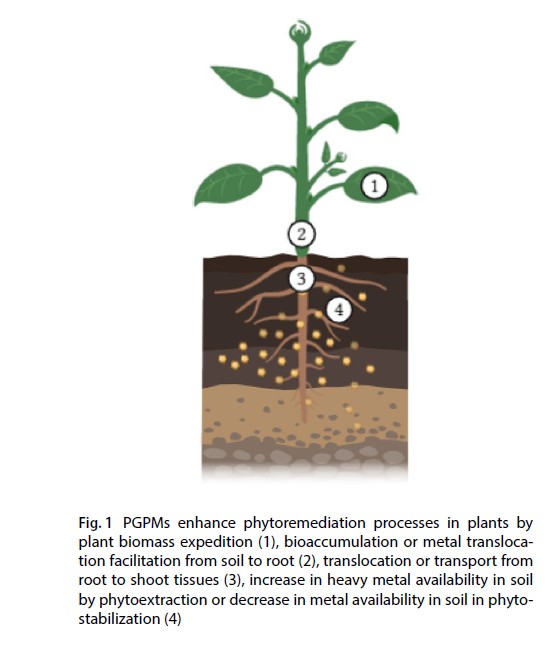Bio- and Phytoremediation: A Symbiotic Solution for Heavy Metal-Polluted Soils
Published in Bioengineering & Biotechnology, Ecology & Evolution, and Agricultural & Food Science

Did you know that certain plants and microorganisms have natural superpowers to clean up soils polluted with heavy metals like lead, cadmium, or mercury? This review explores the fascinating world of bio- and phytoremediation, where hyperaccumulating plants and metal-resistant microbes join forces to detoxify contaminated environments. From rhizoremediation to genetic engineering and microbial teamwork, discover the future of sustainable, living clean-up technologies.
In the face of growing heavy metal contamination in soils due to industrial and agricultural activities, sustainable solutions are urgently needed. This review, published in SN Applied Sciences, presents a comprehensive overview of bio- and phytoremediation—eco-friendly strategies that harness the natural abilities of hyperaccumulating plants and metal-resistant microorganisms to remediate polluted environments.
The article explores the physiological and molecular mechanisms employed by these organisms, including biosorption, phytostabilization, bioaccumulation, and chelation. Special attention is given to Plant Growth-Promoting Microorganisms (PGPMs) such as Pseudomonas fluorescens, Bacillus subtilis, and Rhizobium spp., which play a critical role in enhancing plant tolerance and metal uptake efficiency.
The review also highlights the potential of native Mexican plants like Ricinus communis (castor bean), Helianthus annuus (sunflower), and Prosopis laevigata (mesquite), recognized for their high biomass and tolerance to heavy metals such as cadmium, lead, and zinc. On the microbial side, key species such as Cupriavidus metallidurans and Pseudomonas putida exhibit genetic adaptations for metal detoxification, making them prime candidates for rhizoremediation systems.
Finally, the study envisions next-generation remediation approaches incorporating genetic engineering, nanotechnology, and biochar amendments, paving the way for more efficient, targeted, and sustainable bioremediation technoly.

Read the full article here: https://doi.org/10.1007/s42452-021-04911-y
Follow the Topic
-
Discover Applied Sciences

This is a multi-disciplinary, peer-reviewed journal for the disciplines of Applied Life Sciences, Chemistry, Earth and Environmental Sciences, Engineering, Materials Science and Physics, fostering sound scientific discovery to solve practical problems.
Related Collections
With Collections, you can get published faster and increase your visibility.
Chemistry: Applied Phytochemistry: Characterization, Extraction, and Applications in Food, Pharmaceutical, and Agriculture
Publishing Model: Open Access
Deadline: May 01, 2026
Engineering: Research and Technology Innovations in Industrial Engineering
The Collection aims to present the latest achievements in automation strategies, digitalization, and process efficiency improvement, with particular emphasis on sustainable practices. It covers topics related to modern technologies used in industrial engineering, innovations in production management, and the use of data analysis in improving the efficiency of production systems. It aims to discover the future generation in manufacturing by implementing smart technologies, intelligent systems using up-to-date approaches, and modern software based on IoT, VR/AR, ANN, GA, etc. These technologies allow using data and information throughout the entire life cycle of the product and ensure the creation of flexible production processes that rapidly respond to challenges in demand at low cost to the enterprises as well as to the environment.
This Collection supports and amplifies research related to: SDG 9, SDG 12
Publishing Model: Open Access
Deadline: Dec 31, 2025


Please sign in or register for FREE
If you are a registered user on Research Communities by Springer Nature, please sign in